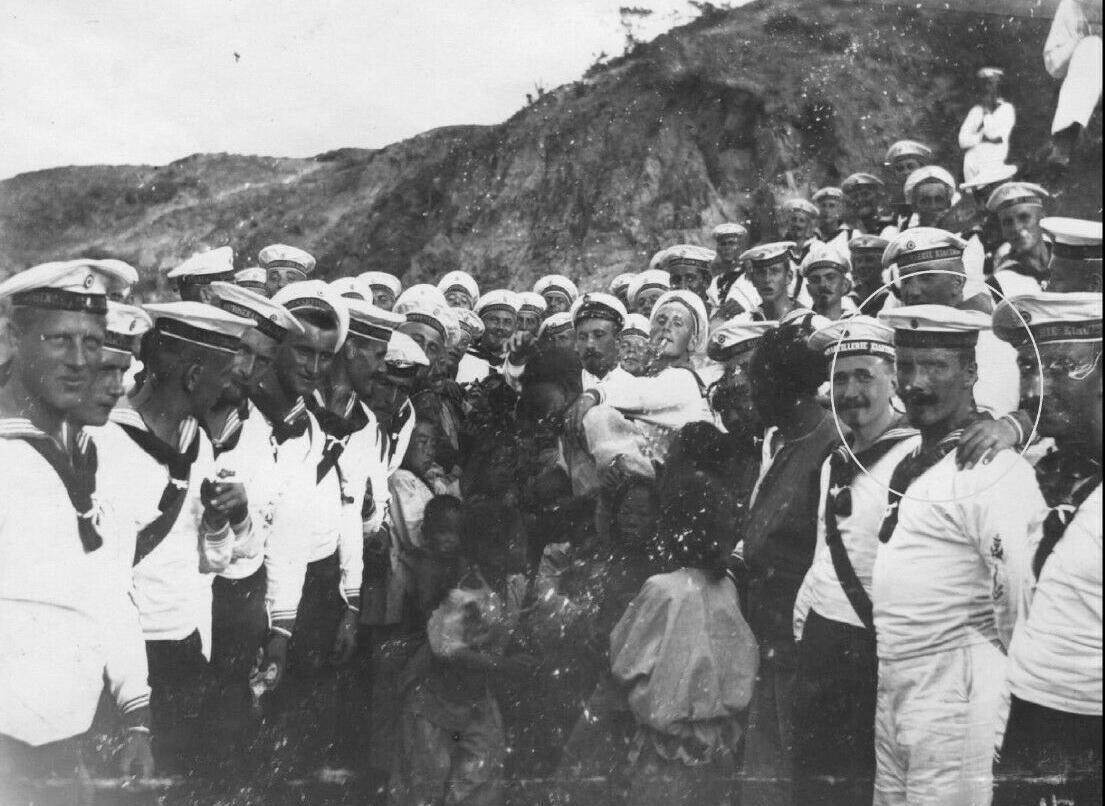
Figure 1.--Here German naval artilerist from Traingtao are donating bread to Chinese children in 1909. The circled sailor is Fritz Mügge. They are on an outing outside the city. |

|
Germany was finally unified (1871), but it had no apprecible navy. A new Kaiser acceeded to the German throne (1888). Kaiser Wilhelm II was the grandson of Queen Victoria and the son of British Princess Royal Victoria. From his earliet memmories he recalls trips to England and reviews of the Grand Fleet. And after becoming Kaiser he wanted a high sea fleet of his own. Which meant that Germany began acquiring the means to maintain a colonial empire. Along with African and Pacific colonies, the Kaiser wanted German's own treaty port. German naval officers observed the Chinese building activity at Tsingtao while conducting a formal survey of Jiaozhou Bay (May 1897). The Germans were looking for a treaty port suitable for a naval base. They decided on Tsingtao. Two German missionaries were murdered in China (late-19th century). The Germans demanded reparations, providing a pretext for seizing a treaty port. German troops landed at Tsingtao and occupied the Chinese fortification. [Gottschall, p. 146]. The Imprial Chinese Government which had just lost a disasterous war with Japan, declined to fight anoyher war with Germany. China formally conceded Tsingtao to the Germans (1898). The Imperial Chinese Government granted Germany a 99-year lease on Tsingtao. The whole affair was more action that fed into the Boxer Rebellion (1900). Germany proceeded to build a port and naval base. The Germans developed Tsingtao as the main German base in the Far East. They garrisoned some 4,000 troops at Tsingtao and the German Navy's Pacific Squadron was based there. Tsingtao and the surrounding area bcame known as the Kiautschou Bay concession and gave the Germans a dominant position in Shandong / Shantung Province. There was not much to the town, actually more of a village, when the Germans arrived. Marktstrasse consisted of the humble former homes of fishermen and farmers. Thet sold their property to the Germans and resettled in the villages further east. [Matzat] Once in possession of the concession, the Germans began constructing a modern European city with wide avenues. It included a sewer system with safe drinking water, a rarity in China at the time. Special attebtion was given to education. At the time, Germany probably had the finest public school system in the world. And unlike other treaty ports, the Germans built a public school system for the Chinese within the Tsingtao concession. It included primary, secondary and vocational schools paid for by the Imperial German Governmeny and Protestant and Roman Catholic missions. Schultz-Naumann, p. 183.] German businessmen followed the flag. The Germania Brewery evolned into the now huge Tsingtao Brewery. German influence expanded beyond Tsinftao to Shandong Province. The Germans clasified Tsingtao as a strategically important port. It was thus administered by the Imperial Department of the Navy (Reichsmarineamt) rather than the Imperial Colonial Office (Reichskolonialamt). The Kreigsmarine based their Far East Squadron at Tsingtao. Ships conducted operations throughout the Pacific. Marines of III Seebataillon were garrisoned at Tsingtao (January 1898). Construction of the Jiaoji Railway began (September 23, 1899). Construction was completed (1904).
Matzat, Wilhelm. "Landmann Gottfried 1860-1926 Uhrmacher, Optiker, Bierbrauer" (May 2003).
Schultz-Naumann, Joachim. (1985). Unter Kaisers Flagge: Deutschlands Schutzgebiete im Pazifik und in China einst und heute [Under the Kaiser's Flag: Germany's protected areas in the Pacific and in China then and now] (Universitas: 1985).
Navigate the Children in History Site:
[Return to Main German colonial empire page]
[Return to Japanese World War I seizure of Tsingtao page]
[Return to Main Chinese World War I page]
[Return to Main Chinese treaty port page]
[About Us]
[Introduction]
[Biographies]
[Chronology]
[Clothing]
[Disease and Health]
[Economics]
[Environmental issues]
[Geography]
[History]
[Human Nature]
[Law]
[Nationalism]
[Presidents]
[Religion]
[Royalty]
[Science]
[Social Class]
[Bibliographies]
[Contributions]
[FAQs]
[Glossaries]
[Images]
[Index]
[Links]
[Registration]
[Tools]
[Children in History Home]
